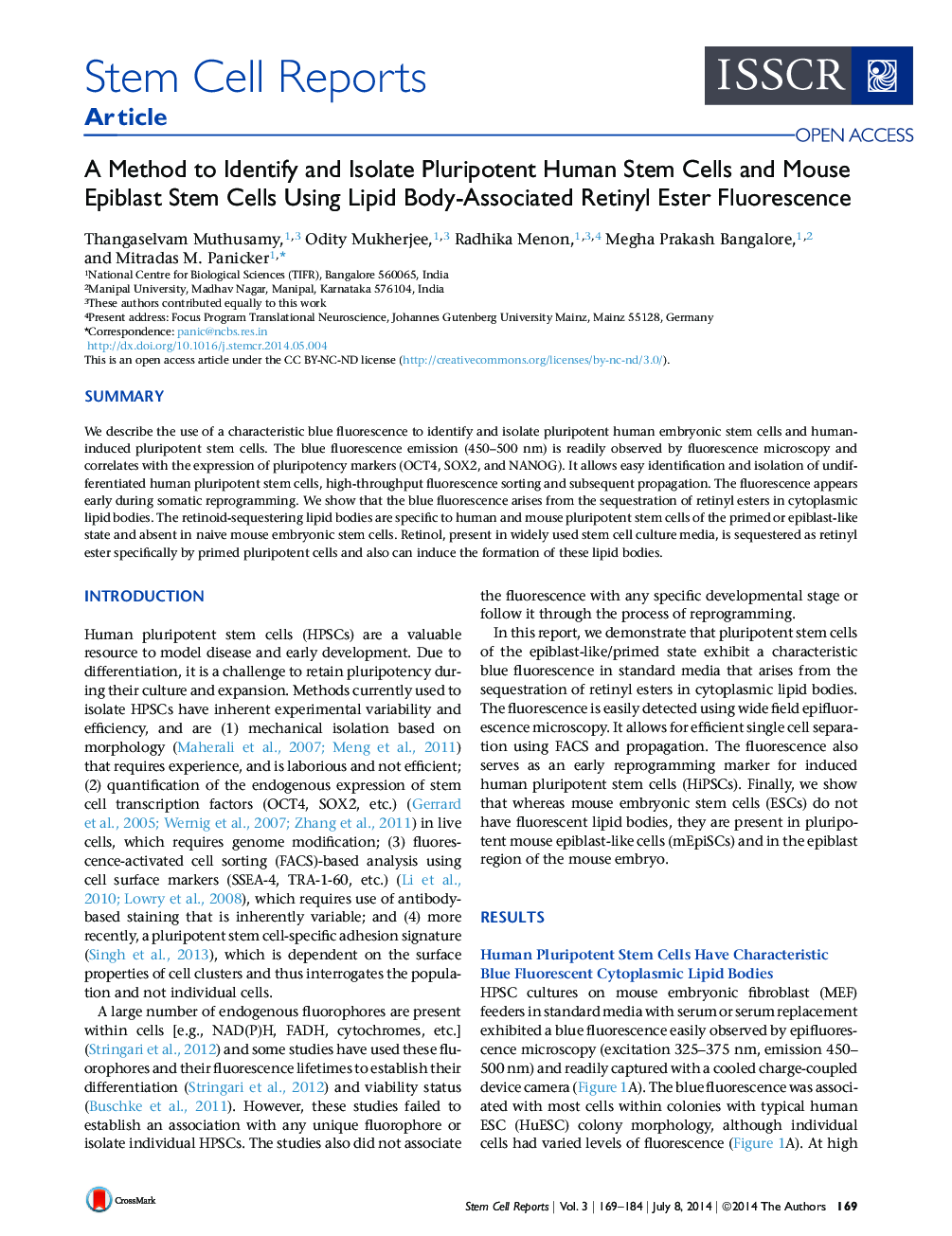| کد مقاله | کد نشریه | سال انتشار | مقاله انگلیسی | نسخه تمام متن |
|---|---|---|---|---|
| 2093389 | 1081956 | 2014 | 16 صفحه PDF | دانلود رایگان |
• Human pluripotent stem cells exhibit a characteristic blue fluorescence
• It arises from the sequestration of retinyl esters in cytoplasmic lipid bodies
• It is associated with pluripotency and allows for easy high throughput propagation
• It marks cells of primed or epiblast-like state and is absent in naive cells
SummaryWe describe the use of a characteristic blue fluorescence to identify and isolate pluripotent human embryonic stem cells and human-induced pluripotent stem cells. The blue fluorescence emission (450–500 nm) is readily observed by fluorescence microscopy and correlates with the expression of pluripotency markers (OCT4, SOX2, and NANOG). It allows easy identification and isolation of undifferentiated human pluripotent stem cells, high-throughput fluorescence sorting and subsequent propagation. The fluorescence appears early during somatic reprogramming. We show that the blue fluorescence arises from the sequestration of retinyl esters in cytoplasmic lipid bodies. The retinoid-sequestering lipid bodies are specific to human and mouse pluripotent stem cells of the primed or epiblast-like state and absent in naive mouse embryonic stem cells. Retinol, present in widely used stem cell culture media, is sequestered as retinyl ester specifically by primed pluripotent cells and also can induce the formation of these lipid bodies.
Graphical AbstractFigure optionsDownload as PowerPoint slide
Journal: - Volume 3, Issue 1, 8 July 2014, Pages 169–184
